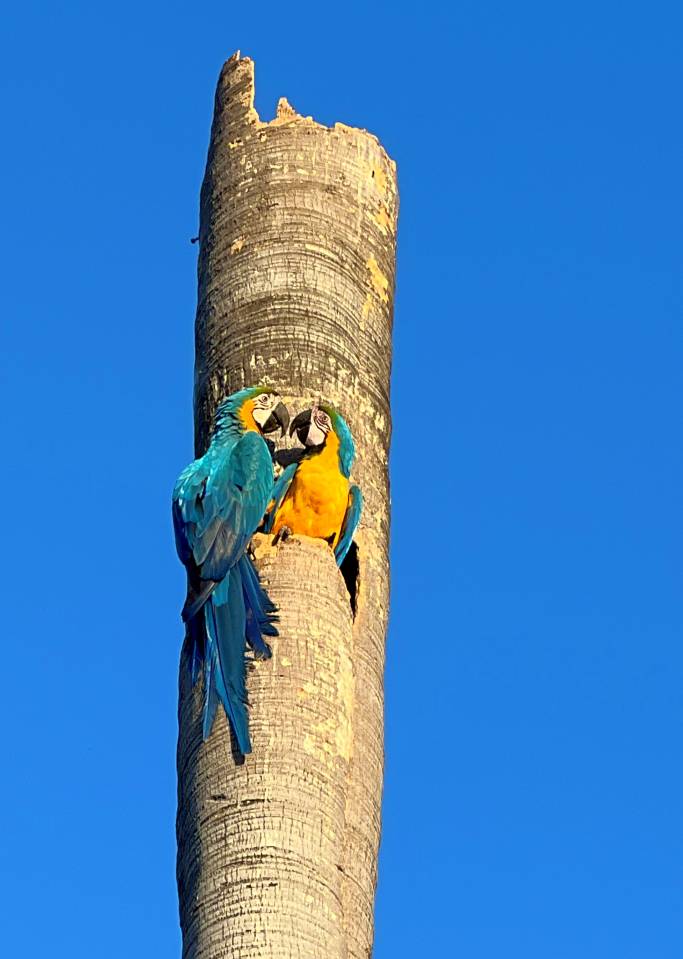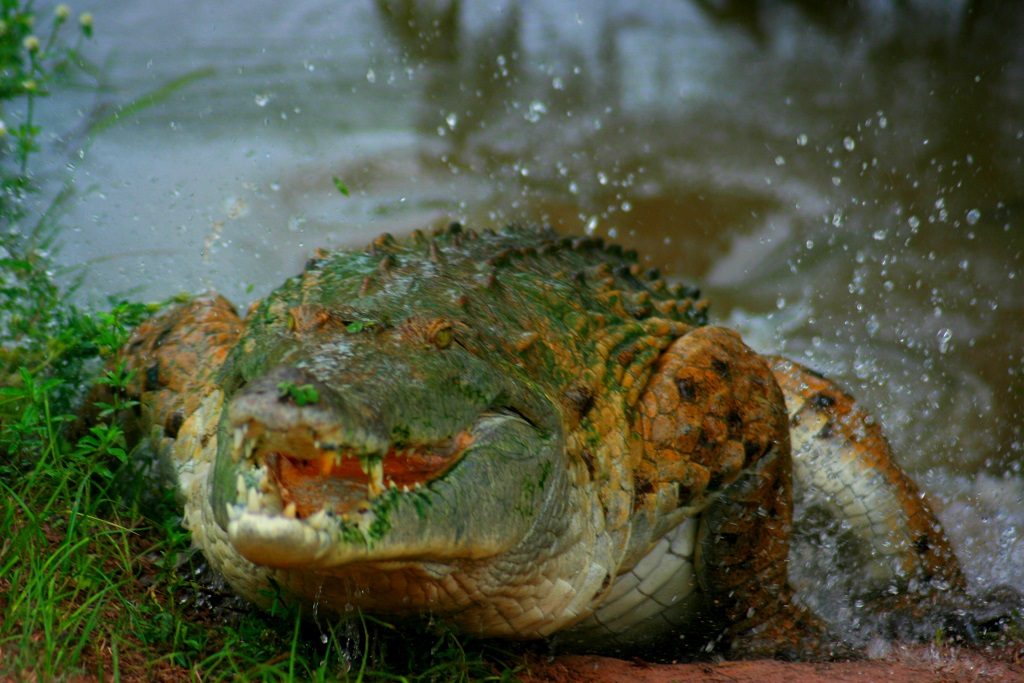
The fauna of Venezuela consists of a huge variety of animals. Venezuela’s diverse wildlife includes manatees, Amazon river dolphins, and Orinoco River crocodiles, which have been reported to reach up to 6.6 metres (22 ft) in length.
According to Wikipedia – some 23% of reptilian and 50% of amphibian species that inhabit the country are endemic to Venezuela. Overall, around 8,000 species (the world’s 5th highest total) are endemic to the country.
Venezuela hosts a total of 1,417 bird species, more than 351 mammals, 341 reptiles, 315 amphibians and more than 2,000 freshwater and marine fishes. Invertebrates groups have not been inventoried exhaustively, but among the better known groups there are around 900 species of marine molluscs, 1,600 butterflies, over 120 dung beetles species and 39 species of blowflies.
See also: List of mammals of Venezuela

It is basically because Venezuela is one of the most bio-diverse countries on the planet. There are so many ecosystems due to the fact that Venezuela has rainforests, jungles, wet plains, beaches, islands, hills and even snow-capped mountains, which are a part of the Andes.

There are at least 45 endemic bird species and some unique mammals endemic to Venezuela that include the howler monkey, capybara, giant anteater, giant otter, white-bellied spider monkey, crab-eating fox, sloths and jaguars. Sloths are typically found in Venezuela’s tropical rainforests, crab-eating foxes live in the vast southern region, while giant anteaters can be found in different habitats across the country. Capybaras are also somewhat versatile, and prefer living near water.
There are two species of mammals that are both endemic to the Maracaibo Basin which spans the northwestern region of Venezuela – the Guajira mouse opossum and Hummelinck’s vesper mouse.
The Pantepui has a relatively high number of endemic species ranging between 30-40% which makes the region one of the most biologically diverse on the planet. Endemic amphibians to the region may reach an amazing 55%.
There are some endangered species such as the Harpy Eagle and the Orinoco Crocodile, forty-eight bird species that reside in Venezuela are also considered threatened.

Venezuela hosts a total of approximately 1,417 bird species making it a paradise for bird watchers.

The national bird of Venezuela is surprisingly – the Troupial.
List of birds of Venezuela from Wikipedia and two others referenced on Angel-Eco Tours’ web site – List of birds Henri Pittier, Aragua State, Venezuela and List of Birds, Animals – Hato Cedral (Los Llanos)
Birds of Venezuela Second Edition by Steve L. Hilty is a favourite amongst bird watchers to carry on their expeditions.
The Phelps family contributed significantly to the study of Venezuelan ornithology; an American explorer, William H. Phelps Sr. traveled extensively to the country, where his son was born and raised and where the William Phelps Ornithological Collection is kept. This collection grew from a series of expeditions to Venezuela’s islands, tepuis, rural flatlands, great plains, and deserts.
From the Phelps Collection, at least 300 species have been identified, and the authoritative guides to birds of Venezuela have been developed.
Yes. Angel-Eco offers one that visits various parts of the country in search of exotic species. Venezuelan Wildlife Tour
The Harpy is a favourite bird of partners Paul Graham Stanley and Ben Rodriguez.
Here is another Harpy Eagle link that may be of interest – Monkey-eating eagle dive bombs BBC filmmaker as he fits nest-cam. https://www.theguardian.com/environment/2010/jul/06/harpy-eagle-attack-cameraman